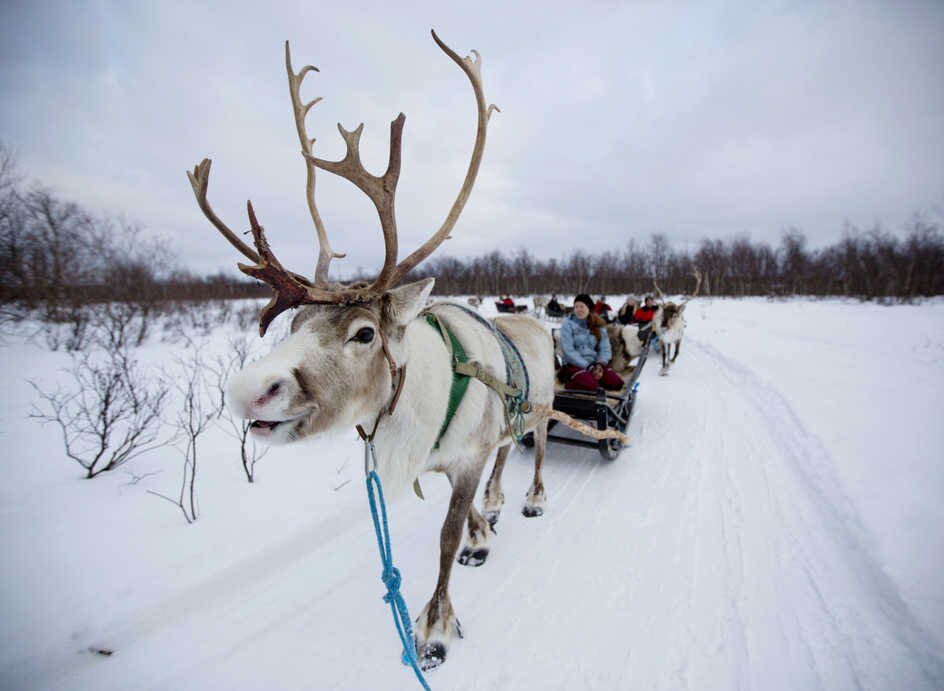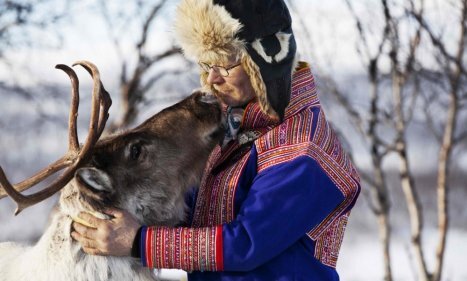You're planning a visit to see the Northern Lights. It's a fantastic, magical experience you'll remember for life. But there's more to Lapland than snow and the aurora. You'll see reindeer too, remarkable creatures that have adapted perfectly to the unique conditions they live in. They're beautiful animals, loved by the local Sami people and adored by visitors.
Here's what you need to know about a creature whose middle name might as well be 'Christmas'!
_w=1240_h=500_pjpg.jpg?v=202509161525)
Fascinating facts about the life of the reindeer
- Reindeer everywhere, including the reindeer of Lapland, belong to the deer family (Latin name cervidae), a family that also includes elk and moose. Reindeer eyes change colour, and they're the only mammals known to do so. Their eyes actually change with the Arctic seasons, either turning gold or blue depending on the levels of light. It seems to help them spot predators in their strange environment, a place of extreme light and dark, sometimes totally light or completely dark for 24 hours a day.
- Male and female reindeer both grow antlers. And the red nose legend has its roots in a strange natural phenomenon. Reindeer noses are actually designed to warm the air before it flows into their lungs. They do it thanks to a dense web of blood vessels, around 25% more capillaries than the human nose. When it gets really cold, the flow of oxygenated blood keeps the nose nice and warm. Scientists also believe these extra blood vessels help regulate their internal body temperature, essential because they don't sweat.
- Reindeer hooves are unusual too. They grow in summer, when the ground is soft and they risk sinking in, and they shrink again in winter because it's easier to stay upright on top of the harder ground. As a rule, the farther north you go, the paler the reindeers' coat gets, and that's why white reindeer experiences in Lapland are so popular – they're such incredibly attractive creatures.
- The Sami in Lapland are not the only tribe to herd and keep reindeer. It's a popular thing among Arctic peoples, who have lived amongst the creatures for centuries if not thousands of years. This is illustrated by the animal's name, which comes from the ancient Norse word hreinn. Because it simply means 'deer', the word 'reindeer' actually means 'deer deer'.
- Reindeer are great travellers. They have a range of just under 200 square miles and are highly social herd animals, resting, feeding and travelling in large groups of as many as several hundred. But the spring sees these smaller herds combine into massive crowds of 50,000 to 500,000 animals, which steadily make their way a thousand miles or so south searching for food.
- Being herbivores, reindeer eat ferns, moss, grass, shoots, fungi and leaves. To survive, they have to consume anything from 9 to 18 pounds of vegetation every day. In winter they dig through the snow for food using their antlers, and they eat as much energy-rich lichens as they can. Thanks to an excellent sense of smell, they can scent food buried as deep as two metres under the snow.
- The gestation period for reindeer is roughly seven-and-a-half months, and while they usually have one baby at a time, some have as many as four. The babies can stand more or less straight away, and they're on a diet of solid food plus mum's milk within a week. Six months later they're weaned, and they're ready to grow their first antlers at the age of two. As a reindeer, you're an adult by the age of four to six, and you'll live as long as 18 years.
_w=1240_h=500_pjpg.jpg?v=202509161525)
